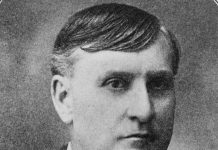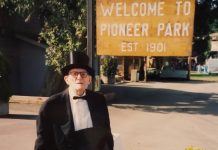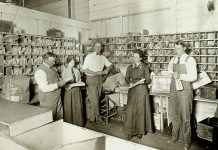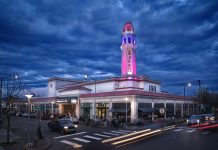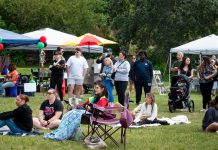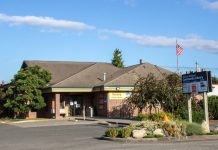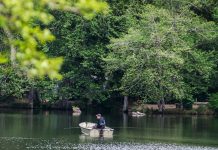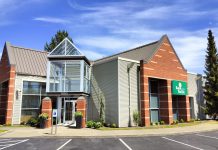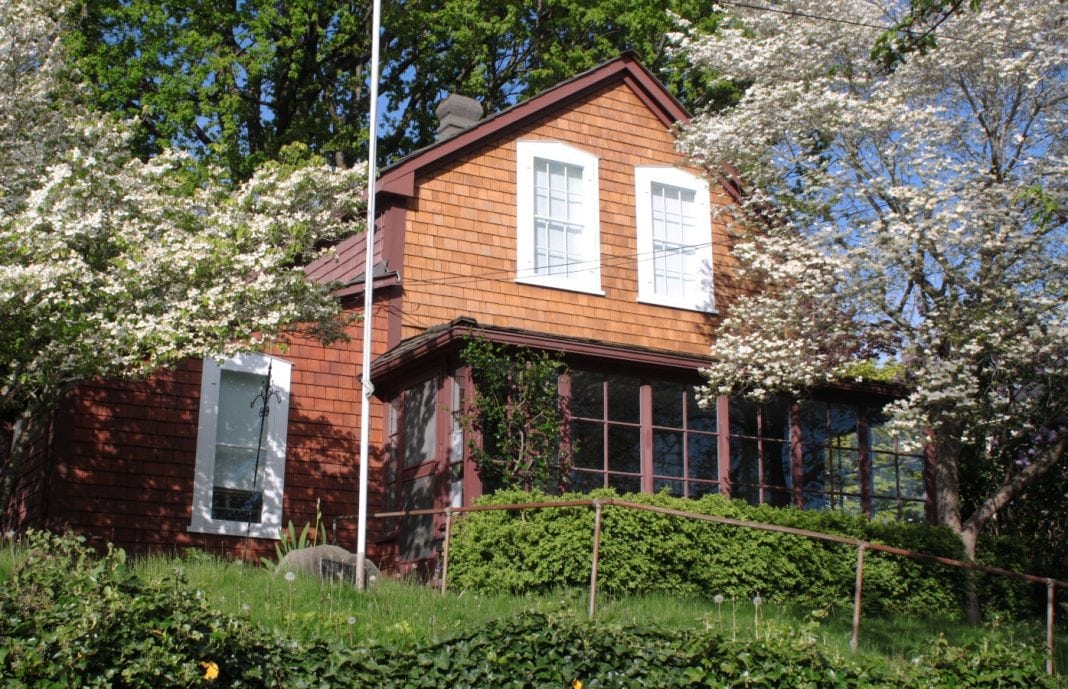Every city has historical buildings that represent the long-forgotten past. Two of Bellingham’s oldest structures are also among the oldest of their kind in all of Washington State. Let’s explore these amazing, historical spaces.
The Old Territorial Courthouse
In July 1858, a shipment of bricks – likely manufactured in San Francisco – made their way to Bellingham Bay aboard the Ann Perry, a ship that had sailed north from the Bay Area. It was the height of the Fraser River gold rush and the town of Whatcom had transformed from a small settlement of several hundred to a boom town of over 10,000, with many tents and wood structures covering the beachfront.
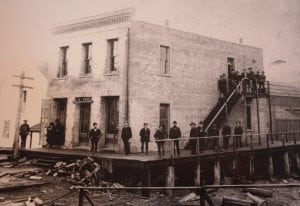
The Ann Perry couldn’t get to shore because of the bay’s mud flats, so the bricks were unloaded onto smaller boats and brought ashore, where they were used to construct the first brick building in all of Washington Territory.
Today that building still stands, located at 1308 E Street, just across from Lighthouse Mission. It’s the oldest surviving brick structure north of Portland and, quite possibly, west of Wisconsin.
“It’s a really important piece of history,” says Rick Tremaine, who purchased the building in March after leading its eight-year-long restoration. Although originally built by TG Richards and Company as a two-story provisions store for the gold rush, the building was soon used for other purposes.
Shortly after construction, the Canadian government began requiring miners to visit Victoria, B.C. for prospecting licenses. Many packed up and left Whatcom, taking their businesses, tents and even wooden structures with them. But the brick and mortar of 1308 E Street remained on the beach. When the gold rush fizzled in the fall of 1858, the business struggled. It was sold to the county in 1863, beginning the building’s use as a territorial courthouse and jail.
From 1863 until the mid-1880s, this is where residents of what is now Whatcom, Skagit, San Juan and Island Counties (Whatcom County was much bigger before Washington became a state) would venture for court-related matters.
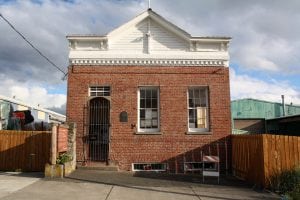
Tremaine’s family has called Whatcom County home since the 1850s. His great-grandfather wrote a book in which he recounts visiting the courthouse, accompanied by Tremaine’s great-great-grandfather, to get his marriage license.
The building eventually became unfit for courthouse and jail duties. It saw a multitude of owners and tenants from the 1880s until 1955, when Carl and Nickie Akers bought it for their taxidermy shop.
By then, the building had become a single story structure with a basement, following the fill-in of the Bellingham waterfront in the early 20th Century. One of the building’s more interesting uses was as a stop for Vietnam War draft dodgers, who’d often stay there overnight before continuing north to Canada.
When the Akers moved on in 2003, the place fell into disrepair. The Whatcom County Historical Society established an office on the bottom floor and attempted to look after the building, but they struggled with the cost of upkeep.
When renovations began eight years ago, Tremaine says it wasn’t pretty: water ran down from the roof. Brick seals and wood had succumbed to moisture damage. At one point during the renovation, the entire downstairs flooded. But Tremaine persisted to save the old building and today, after thousands of hours of work, it contains both new life and remnants of the past.
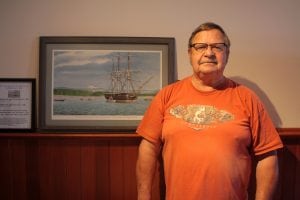
The building’s original hardwood maple floor shines on the first floor. The stairs date to its courthouse days. The basement features the historical society office (site of the former jail) and a bathroom with an old skylight still embedded into the sidewalk above. In an underground storage area, rusted-out hinges that once opened the structure’s metal doors to a 19th Century street remain embedded in the walls.
Restorations are complete, although Tremaine says exterior building re-sealing must be done this summer. To keep the place paying for itself, Tremaine plans to rent it out for community events, including small weddings, music and art events, lectures and meetings. He hopes the building will remain in his family for generations to come.
“I love history,” he says. “It’s just natural that it needs to be saved. It’s 160 years old this year and I want it to be around another 160 years.”
For information on renting the Old Territorial Courthouse for your event, call 360-319-0065 or email ricktremaine@gmail.com.
The Pickett House
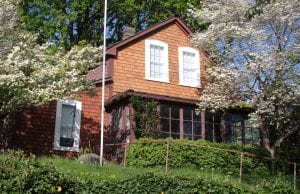
A short distance away, a brown, two-story house sits at 910 Bancroft Street. This structure is named for a man who helped lead one of the Civil War’s most infamous military maneuvers.
Before George E. Pickett led the futile Confederate charge named after him on the final day of the Battle of Gettysburg, he briefly lived here, in what’s now the state’s oldest documented wooden structure on its original site.
The home was built in 1856 using lumber from the nearby Roeder-Peabody Mill. At the time, Pickett was a U.S. Army captain who’d come from Fort Steilacoom (near modern-day Lakewood) to help construct Fort Bellingham, helping protect area settlers from Native attacks. While here, Pickett oversaw the first bridge built across Whatcom Creek and married a Native American woman who gave birth to their son, James Tilton Pickett, in 1857.
Despite the fact that it’s named after him, Pickett lived in the house less than three years. He spent time on San Juan Island during the 1859 Pig War before leaving to join the Confederacy around 1861, never to return.
After Pickett, the home saw seven different residents until 1889, when Robert Franklin Strother, a Civil War vet from Tennessee, bought the place. His two daughters, Willie and Hattie, and their “Aunt Mary” Smith moved from Cincinnati to join him.
Smith, a freeborn black, wound up living in the home with Hattie until the 1930s. In total, Hattie Strother was the home’s longest resident, living there 47 years until her death in 1936. She sold the house to the Washington State Historical Society for one dollar, and its furnishings to the county chapter of Washington’s Daughters of the Pioneers for another dollar.
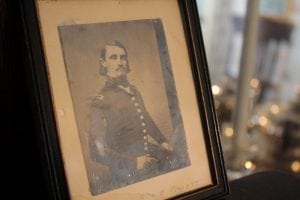
The Pickett House became an official museum in 1941, but continued having live-in caretakers until the 1960s. It was deeded to the Daughters of the Pioneers in 1965 and listed on the National Register of Historic Places in 1971. Today, the Pioneers, led by current Chapter 5 President Edradine Hovde, offer guided tours the second Sunday of every month.
“All of these different people who have lived here make this a very significant historical spot,” says Hovde.
Stepping into the home is an experience, from the creak of old floorboards to the saw marks still visible on its wooden walls. In several rooms, strips of old paper labels gap wooden wall planks. Once hidden beneath six layers of wallpaper, the strips created flatter surfaces for proper wallpapering.
Two years ago, in an upstairs bedroom that’s now the Hattie Strother sewing room, Hovde pulled back several carpet layers to reveal old newspapers once used as insulation. One, a near-pristine 1894 copy of the Bellingham Bay Express, hangs framed on a nearby wall.
The house is an amalgamation of different eras, from a piece of Fort Bellingham’s wooden flagpole to a china hutch once belonging to Strother. Perhaps most impressive are a set of drapes, hand-woven by the widow of a Revolutionary War soldier. Hovde says the origins of some artifacts are unknown, but all are treasures.
Recent renovations to the home come courtesy of an Anacortes woman belonging to Questers, an international non-profit with local chapters focused on preserving historical sites and antiques. With two years’ worth of funds, the Daughters have renovated the building’s once water-damaged bathroom and re-configured the home’s lean-to section to resemble a military campaign tent.
And so, with folks like Tremaine and Hovde watching over them, these historic Bellingham structures survive, reminding residents of the past as the city moves into the future.
For more information on the Pickett House or to arrange a tour, call 360-733-5873 or email daughtersofpioneers@hotmail.com.






